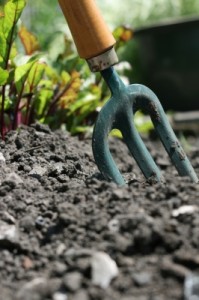As stated in last month’s article, there are three major methods of gardening: (1) Traditional; (2) Raised; and (3) Container. Regardless of which method you choose, it is time to determine and select the name and variety of vegetables to be grown.
 There are three ways that you can determine the variety of vegetable you are to grow: (1) Recommendations of friends; (2) Beautiful, colorful pictures in a seed catalog; or (3) The wonderful flavors of vegetable memory lane. For example, to me, there are tomatoes and then there are tomatoes. Each variety has its own particular taste. I love the taste of the Best Bush tomato but dislike the taste of Mortgage Lifter, or others with an acid taste. The sense of smell and taste are a strong human trait. If you are new to vegetable gardening, you will have to depend on the first two ways.
There are three ways that you can determine the variety of vegetable you are to grow: (1) Recommendations of friends; (2) Beautiful, colorful pictures in a seed catalog; or (3) The wonderful flavors of vegetable memory lane. For example, to me, there are tomatoes and then there are tomatoes. Each variety has its own particular taste. I love the taste of the Best Bush tomato but dislike the taste of Mortgage Lifter, or others with an acid taste. The sense of smell and taste are a strong human trait. If you are new to vegetable gardening, you will have to depend on the first two ways.
If you are a novice gardener, and you plan to have a new traditional vegetable garden this year, you are probably one year late. It takes a minimum of one year to transform a plot of land into a desirable garden spot. The following is a list of cultural practices to be conducted the first year.
- Measure and stake the garden perimeter area. A garden covering 700 to 800 square feet is ample for a family of two participating in a giveaway food program to their neighbors. Most neighbors would rather you do the work, like harvest, wash and package the produce, than for them to do so. Why? Two reasons: One, they feel awkward because they fear they may harvest too much or too little, and two, they feel overwhelmed, knowing that once they harvest the vegetables, they will have to prepare and cook them at home. Properly cooking vegetables is another subject not covered in this article!
- Rototill any existing vegetative debris as deeply as possible and remove all rocks and wood that do not pass through a garden rake.
- Apply three inches of composted organic matter and incorporate six to eight inches deep.

- After 30 days collect a soil sample to determine nutrient levels and pH of the soil.
- Amend soil with fertilizer and lime as recommended.
- Control weeds with hoeing and/or post emergent herbicide. Make sure the maximum rate of herbicide per year is not surpassed as per chemical label. This initial weed control is very important, especially if you have obnoxious weeds such as Bermuda grass and nut grass.
Note: If your garden is a seasoned garden, one that has been actively used over the period of years, collect soil samples and determine the required nutrient levels and pH every other year. Do not forget crop rotation. If you want a tomato crop failure, plant tomatoes in the same spot yearly.
There are many rewards in traditional vegetable gardening. There is nothing like smelling the earthly odor of freshly tilled soil in March. This is when a soil microorganism known as actinomycetes begins to flourish. (Actinomycetes are a large group of bacteria that grow as hyphae like fungi. They are responsible for the characteristically “earthy” smell of freshly turned, healthy soil. Actinomycetes decompose a wide array of substrates, but are especially important in degrading recalcitrant (hard-to-decompose) compounds, such as chitin and cellulose, and are active at high pH levels.)
Happy planning.




